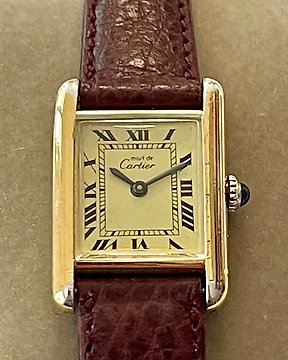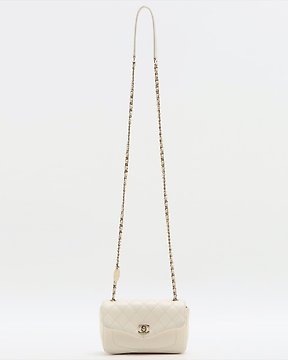Great object. Really beautiful. Quick delivery. Excellent.
Zobacz tłumaczenieStarożytny Rzym Szkło Maść. I - III wiek n.e. Wysokość 7,6 cm. (Bez ceny minimalnej )
Nr 88444649



Ointment.
Ancient Roman, 1st - 3rd century AD.
Glass.
7.6 cm height.
PROVENANCE: Private collection, Nogent Sur Marne, France, acquired between 1960 - 1980.
CONDITION: Good condition, minimal cracks.
DESCRIPTION:
Big and small sized bottles of various shapes (more or less globular body, tall or low flared neck, ribbed or plain handles, etc.) and blown in different colors (aubergine, blue, yellow, transparent, green, etc.) were very popular from the 1st to the 4th century A.D.: they were part of the most frequently used toiletry tools. Their success certainly encouraged glassworkers to be highly inventive in order to create new versions, even more attractive to the public.
Towards the end of the Hellenistic period, glass definitely supplanted terracotta as a raw material for the manufacture of containers in all areas of daily life: this event, which occurred gradually, shall be regarded as a major technical revolution in antiquity, made easier, in early Roman times, by the invention and quick spread of the blowpipe, and by the conception of furnaces resisting to higher and higher temperatures.
With a versatility like no other known material in Roman times, abundant availability, lightness and ease of use, glass enabled the imitation of a wide range of other materials (especially precious metals), whether in the form, the design or the color. Furthermore, the ancients certainly knew that glass is a chemically neutral substance, what makes it particularly suitable for the storage of cosmetics or pharmaceutical products, as well as food and liquids.
Just about all Roman burials contain clear or greenish glass vessels covered with an iridescent patina due to the action of humidity and air. These flasks, when made in narrow forms, are often called unguentaria or lacrimaria by collectors, but were only used to contain oils and perfumes in the tombs, not to be containers for tears.
The Romans also perfected the art of working figures in relief on the glass vessels with the addition of another layer of glass of a different colour, or one of enamel, along with moulding, cutting or engraving of the glass, with the result that the surfaces of the containers looked like worked cameos.
BIBLIOGRAPHY:
- ARVEILLER-DULONG, Véronique. NENNA, Marie-Dominique. Les verres antiques au museé du Louvre. Tomo II. Museé du Louvre. 2006.
- FLEMING, Stuart J. Roman Glass: Reflections on Cultural Change. University of Pennsylvania Museum of Archaeology and Anthropology. 1999.
Notes:
- The piece includes authenticity certificate.
- The piece includes Spanish Export License (Passport for European Union) - If the piece is destined outside the European Union a substitution of the export permit should be requested, can take between 1-2 weeks maximum.
- The seller guarantees that he acquired this piece according to all national and international laws related to the ownership of cultural property. Provenance statement seen by Catawiki.
Historie sprzedawców
Ointment.
Ancient Roman, 1st - 3rd century AD.
Glass.
7.6 cm height.
PROVENANCE: Private collection, Nogent Sur Marne, France, acquired between 1960 - 1980.
CONDITION: Good condition, minimal cracks.
DESCRIPTION:
Big and small sized bottles of various shapes (more or less globular body, tall or low flared neck, ribbed or plain handles, etc.) and blown in different colors (aubergine, blue, yellow, transparent, green, etc.) were very popular from the 1st to the 4th century A.D.: they were part of the most frequently used toiletry tools. Their success certainly encouraged glassworkers to be highly inventive in order to create new versions, even more attractive to the public.
Towards the end of the Hellenistic period, glass definitely supplanted terracotta as a raw material for the manufacture of containers in all areas of daily life: this event, which occurred gradually, shall be regarded as a major technical revolution in antiquity, made easier, in early Roman times, by the invention and quick spread of the blowpipe, and by the conception of furnaces resisting to higher and higher temperatures.
With a versatility like no other known material in Roman times, abundant availability, lightness and ease of use, glass enabled the imitation of a wide range of other materials (especially precious metals), whether in the form, the design or the color. Furthermore, the ancients certainly knew that glass is a chemically neutral substance, what makes it particularly suitable for the storage of cosmetics or pharmaceutical products, as well as food and liquids.
Just about all Roman burials contain clear or greenish glass vessels covered with an iridescent patina due to the action of humidity and air. These flasks, when made in narrow forms, are often called unguentaria or lacrimaria by collectors, but were only used to contain oils and perfumes in the tombs, not to be containers for tears.
The Romans also perfected the art of working figures in relief on the glass vessels with the addition of another layer of glass of a different colour, or one of enamel, along with moulding, cutting or engraving of the glass, with the result that the surfaces of the containers looked like worked cameos.
BIBLIOGRAPHY:
- ARVEILLER-DULONG, Véronique. NENNA, Marie-Dominique. Les verres antiques au museé du Louvre. Tomo II. Museé du Louvre. 2006.
- FLEMING, Stuart J. Roman Glass: Reflections on Cultural Change. University of Pennsylvania Museum of Archaeology and Anthropology. 1999.
Notes:
- The piece includes authenticity certificate.
- The piece includes Spanish Export License (Passport for European Union) - If the piece is destined outside the European Union a substitution of the export permit should be requested, can take between 1-2 weeks maximum.
- The seller guarantees that he acquired this piece according to all national and international laws related to the ownership of cultural property. Provenance statement seen by Catawiki.
Historie sprzedawców
- 823
- 11
- 1
Superbe objet, Service d'Arqueologia Ancient Art excellent et rapide. Jaume Bagot toujours parfait .
Zobacz tłumaczenieTodo perfecto gracias
Zobacz tłumaczenieNice item all ok A+++
Zobacz tłumaczenieThank you for this Oinochoe, one question: did you as promised read my post!
Zobacz tłumaczenieExcellent translation, and very prompt delivery. Imperfect packaging. A significant crack of the board that had not been described in the original post of the item.
Zobacz tłumaczenieAlways a great pleasure!
Zobacz tłumaczenieFine quality, good service. Thanks.
Zobacz tłumaczenieMuy amables, muy bien todo. Gracias
Zobacz tłumaczenieAlles bestens
Zobacz tłumaczenieexactly as described and shipped safely and punctually.
Zobacz tłumaczenieschnelle Lieferung sehr sichere Verpackung alles bestens
Zobacz tłumaczenietres bel objet je le recherchai depuis longtemps envoi rapide et protégé je pense qu'il y aura d'autres achats avec ce vendeur merci +++++++
Zobacz tłumaczenieEinfach nur toll
Zobacz tłumaczenieTodo perfecto
Zobacz tłumaczenieottimo
Zobacz tłumaczenieperfetto
Zobacz tłumaczenietop oggetto bellissimo grazie 💯💯💯💯💯💯 :-)
Zobacz tłumaczenieI bought this beautiful artifact together with artifact from Mr. Bagot but although it is clearly stated on his shipping page that when purchasing multiple artifacts i paid the double package costs
Zobacz tłumaczenieI bought this beautiful artifact together with artifact from Mr. Bagot but although it is clearly stated on his shipping page that when purchasing multiple artifacts i paid the double package costs
Zobacz tłumaczenieBel objet, bien emballé. Parfait.
Zobacz tłumaczeniewonderful faiece and very fast shipping.thanks a lot
Zobacz tłumaczenieJ Bagot es un profesional excelente. Sus artículos son de gran calidad, se incluye la documentación necesaria y el embalaje se realiza con esmero. Le recomiendo encarecidamente.
Zobacz tłumaczenieo envio foi bastante rápido, obrigado.
Zobacz tłumaczenieSono molto soddisfatto grazie.
Zobacz tłumaczenie- 823
- 11
- 1
Great object. Really beautiful. Quick delivery. Excellent.
Zobacz tłumaczenieKlauzula
Sprzedawca gwarantuje i może udowodnić, że przedmiot został nabyty legalnie. Sprzedawca został poinformowany przez firmę Catawiki, że musi dostarczyć dokumentację wymaganą przez przepisy ustawowe i wykonawcze obowiązujące w jego kraju zamieszkania. Sprzedawca gwarantuje i jest uprawniony do sprzedaży/eksportu tego przedmiotu. Sprzedawca przekaże nabywcy wszystkie znane informacje o pochodzeniu przedmiotu. Sprzedawca zapewnia, że wszelkie niezbędne pozwolenia są/zostaną załatwione. Sprzedawca niezwłocznie poinformuje nabywcę o wszelkich opóźnieniach w uzyskaniu takich zezwoleń.
Sprzedawca gwarantuje i może udowodnić, że przedmiot został nabyty legalnie. Sprzedawca został poinformowany przez firmę Catawiki, że musi dostarczyć dokumentację wymaganą przez przepisy ustawowe i wykonawcze obowiązujące w jego kraju zamieszkania. Sprzedawca gwarantuje i jest uprawniony do sprzedaży/eksportu tego przedmiotu. Sprzedawca przekaże nabywcy wszystkie znane informacje o pochodzeniu przedmiotu. Sprzedawca zapewnia, że wszelkie niezbędne pozwolenia są/zostaną załatwione. Sprzedawca niezwłocznie poinformuje nabywcę o wszelkich opóźnieniach w uzyskaniu takich zezwoleń.









